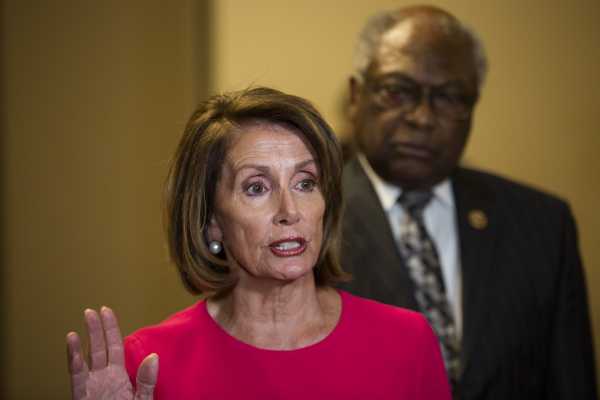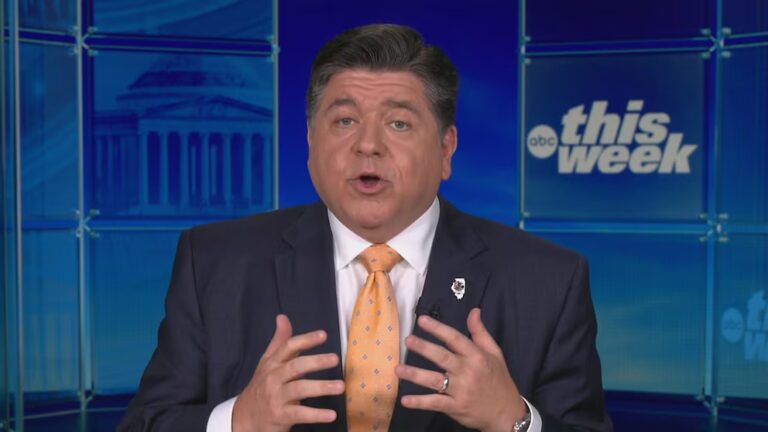
It’s Day 17 of a partial government shutdown and still no deal … or anywhere close to one.
Democratic and Republican congressional staffers met with White House representatives over the weekend in an attempt to kickstart negotiations, but the two sides left talks with little in the way of actual progress.
Here’s where things stand: President Donald Trump is as insistent as ever on securing more than $5 billion to fund a physical barrier at the southern border (though he’s now open to steel instead of concrete), and Democrats are similarly holding the line, refusing to provide more than the $1.3 billion they’ve offered up for border security.
Trump is so committed to making his case that he’s planning to address the public during primetime television remarks on Tuesday and visit the border later this week, according to the New York Times. Meanwhile, House Democrats intend to continue passing appropriations bills to reopen the government in an effort to put more pressure on congressional Republicans.
Their game of chicken is starting to affect Americans across the country and has already taken a toll on roughly 800,000 federal workers — who won’t be receiving any kind of back pay until the partial shutdown is over — as well as thousands of other government contractors who may not get paid at all. Many federal employees have said they’ve needed to file unemployment or take on additional work to address this gap in their paychecks, which will become apparent this week on an upcoming January 11 pay period.
As talks continue to flounder, both sides have put forth their own proposals to put an end to this shutdown. Here are the latest offers they’ve respectively put on the table:
What Republicans have proposed
The White House over the weekend sent a letter to congressional leaders, obtained by Politico, outlining what Trump will settle for in shutdown negotiations. In it, Acting Office of Management and Budget Director Russell Vought outlines the president’s latest requests:
- $5.7 billion to build a steel barrier along the country’s southern border, an increase of $4.1 billion over the previous amount doled out by Senate appropriations,
- $4.2 billion for detention beds, an increase of $798 million over the previous Senate bill,
- and $800 million to address humanitarian needs like “enhanced medical support [and] transportation.”
The letter is clear: Trump isn’t backing down from his demands for more wall funding, and he’s standing firm on adding more detention beds — both efforts that Democrats have long opposed. It also suggests, however, that he’s open to some possible concessions to Democrats — since “humanitarian” funding to improve the treatment of migrants at the border is something that they’ve prioritized, according to the Washington Post.
Additionally, Trump offered what amounts to a seemingly semantic concession about the wall itself, telling reporters Sunday that he would be comfortable going with a steel structure if it would satisfy Democrats’ qualms over building a concrete wall: “I informed my folks to say that we’ll build a steel barrier,” Trump said. “They don’t like concrete, so we’ll give them steel.”
(There hasn’t been any indication that the material that the wall would be built with would mitigate Democrats’ opposition, though Sen. Chris Coons (D-DE) said the president’s shift marked some slight progress in the negotiations.)
Much like previous shutdown debates, a deal for wall funding in exchange for a permanent path to citizenship for Deferred Action for Childhood Arrivals (DACA) recipients has been floated by lawmakers like Sen. Lindsey Graham — though House Democratic leaders have previously said they weren’t interested.
A DACA compromise did not appear to be at the forefront of talks this weekend, though some lawmakers believe it could still be the key to a final resolution.
If a deal can’t be reached, Trump has also said that he is considering declaring a national emergency to secure funding for the wall. House Armed Services Committee Chair Adam Smith said during a media appearance on Sunday that the move could potentially work in the short term but that it would likely face a quick legal challenge. House Intel Committee Chair Adam Schiff was a bit more skeptical and simply said it was “nonstarter.”
What Democrats have proposed
Democrats, meanwhile, haven’t shown any sign of caving to Trump’s demands on a border wall — and are continuing to take a series of relatively symbolic actions to put pressure on their Republican counterparts.
This week, House Democrats plan to pass four individual appropriations bills that would fund agencies that are not controversial, like the Treasury Department, the Interior Department, and the Agriculture Department.
Their actions are largely about party messaging: House Democrats already effectively passed these bills as part of a larger funding package that closely resembled legislation the GOP-controlled Senate approved last year. By bringing them up again and approving each bill one by one, Democrats are trying to hammer home the message that they’re actively working to address the shutdown while Republicans look like they’re standing by. Republicans, however, have said they aren’t interested in opening the government in a fragmented way, Politico reports.
House Democrats’ actions come as pressure continues to grow on Senate Majority Leader Mitch McConnell — from Democrats as well as Republican leaders like Sens. Cory Gardner and Susan Collins — who are urging him to take up legislation that would reopen the government, even if it doesn’t provide the wall funding Trump has asked for.
How government services are affected
Nine out of 15 federal departments are currently affected by the partial government shutdown, which has had some of its most visible effects so far at National Parks across the country and on loan programs for farmers provided by the US Department of Agriculture.
Many mandatory programs like Social Security and Medicaid will continue running without interruption, but other programs millions of Americans depend on could be affected. As Vox’s Tara Golshan reports, the USDA has warned it only has enough funding for food stamps through the end of January, at which point it will have to tap into a $3 billion emergency fund. (That fund would not be enough to cover food stamps for the entire month of February.)
There have also been concerns that tax returns could arrive late since the IRS has furloughed the majority of its employees. (OMB Acting Director Vought tried to forestall that worry Monday, telling reporters that people will still receive their tax refunds even if the shutdown continues into filing season, according to Bloomberg.)
The federal judiciary, which also falls under the part of the government that has yet to be funded, also announced on Monday that it would be able to maintain its normal operations until January 18 by using money from court fees and other reserve funds. The federal judiciary had previously estimated that it would only be able to do so until January 11.
But even if certain government services aren’t officially curtailed while Washington dukes it out, Americans could start seeing the effects anyway: A number of TSA workers are calling out sick, for example, instead of working without pay. Their absence could contribute to airport delays and long lines that could be felt by many travelers who might not otherwise see a direct impact of the shutdown.
What happens now
Congress isn’t officially back in session this week until Tuesday — and a growing number of lawmakers on both sides of the aisle are clamoring for leadership to work out some kind of deal. Already, three Democratic senators have said they are interested in holding up Senate votes this week if a vote isn’t held on funding bills.
As public outcry over the shutdown grows and the effect on tax refunds and government programs like food stamps becomes more likely, the pressure is on lawmakers to figure out a compromise and on Republicans, especially, to decide whether they’ll take up the bills that Democrats are shepherding through the House.
There are a couple different ways this shutdown could end.
With Republicans getting more heat for the shutdown than Democrats, it’s possible they could somehow convince Trump to settle on a lower figure for border security funding, while emphasizing that this conversation can continue even after the government is reopened.
There’s also potentially a larger deal that could be brokered, one involving a trade-off between protections for DREAMers and increased funding for the border wall. (Though House Speaker Nancy Pelosi has fiercely pushed back against this in the past.)
Which path lawmakers will take is still anybody’s guess.
Sourse: vox.com






